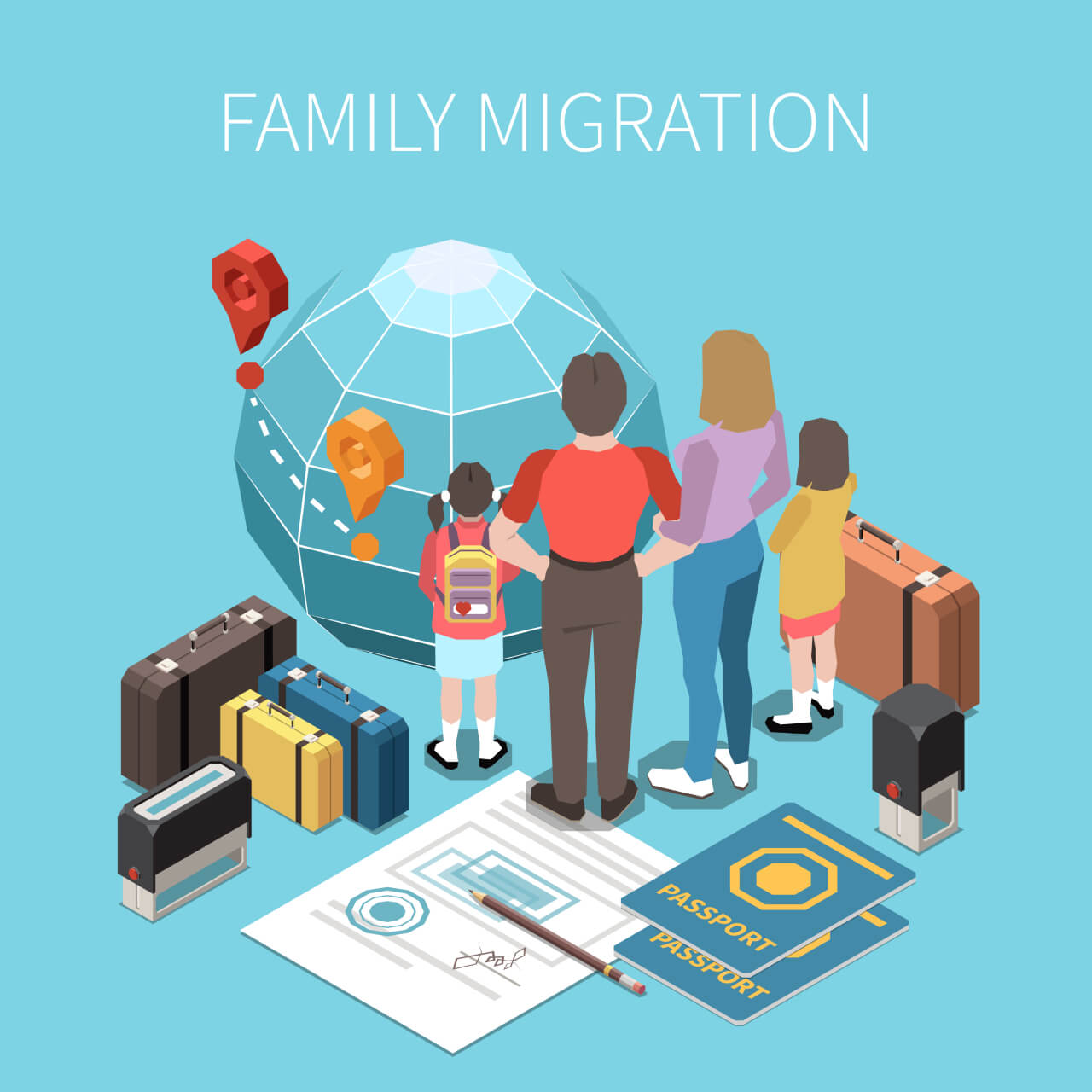This article is intended to give you an overview of the various Immigrant Family Preference Categories that exist, the number of visas available in each category annually, and how the caps and previously issued visas affect the number of visas that might otherwise be available in any given category. This article is meant to complement its sister article, Adjustment of Status and Consular Processing Routes for Family Preference Immigrant Visas. We encourage you to start with this article, before moving on to that one.
Immediate Relatives of U.S. Citizens
If you are the spouse, parent, or unmarried minor child of a U.S. Citizen, you fall into this category. A spouse means that you are legally married to a U.S. Citizen in whatever jurisdiction, so the marriage could have been in the U.S., or it could also have been in your home country. The important part is that the marriage was legally done. A minor child means a person who is under twenty-one years, related either by blood or adoption to the parent, and who is not married. The benefit of being an Immediate Relative of a U.S. Citizen is that you are exempt from any caps which apply to other people applying to immigrate through the Family Preference System. There is no limit to the number of Immediate Relatives that can immigrate each year. Thus, the wait time, once your documents are submitted, is only the paperwork processing time (which, since it is a large government bureaucracy, can be around a year).

Family Preference System
If you are not the immediate family member of a citizen, you can still immigrate to the U.S., but you are subject to the caps (numerical limitations). There is a general formula for determining how many people can immigrate within the Family Preference System and each category has differing numbers. The formula is 480,000 – the number of immediate relatives admitted the year before + available unused Employment Visas from the year before. There are four family preference categories, which are defined and detailed below. They are called preference categories because it is hierarchical. The government has determined that those who fall into Category 1 are more important to let into the United States, than those in Category 4 for example. All of these preference categories are backed up with delays, but in particular, immigrants from China, India, Mexico, and the Philippines have the longest delays. These countries have large numbers of immigrants coming in through employment categories and other means and oftentimes would like to bring their families with them.
F1: The Unmarried Sons and Daughters of U.S. Citizens and Their Children
The first category or preference, is the unmarried sons and daughters of U.S. Citizens. That means you can be over twenty-one with a U.S. Citizen parent and still immigrate. Any minor children of these unmarried sons and daughters are eligible to come with their parents. 23,400 F1 Immigrant Visas are allocated per year + any unused F4 Visas.
F2: Spouses, Children, and Unmarried Sons and Daughters of LPRs and Their Children
This is a very full category, with many people who apply or are qualified and so Congress divided this category into two halves. There are F2as and F2bs. The formula for calculating the number of visas available to this category is a base of 114,200 Visas + any unused F1 Visas.
F2a: Spouses and Children of LPRs
Spouses mean someone legally married to a Lawful Permanent Resident and children of LPRs. Children (as a reminder) are unmarried, they must be under twenty-one years old, and related by either blood or adoption. The spouses or children must be related to a Legal Permanent Resident (green card holder).
F2b: Unmarried Sons and Daughters of LPRs
Unmarried sons and daughters means they can be older than twenty-one, but obviously cannot be married. They must be related by either blood or adoption. If your LPR parent becomes a U.S. Citizen during the process, then your petition is transformed into an F1 petition, once you have updated your information.
F3: Married Sons and Daughters of U.S. Citizens
Married sons and daughters of U.S. citizens are eligible to immigrate under the third preference category. These married sons and daughters are allowed to apply for their spouses and children to get a visa as well since they are what are called derivatives. The number of F3 Immigrant Visas changes every year, and the formula is a base of 23,400 Visas + any unused F1 and F2 visas.
F4: Siblings of U.S. Citizens
Siblings mean that you can be the sister, brother, half-sister, half-brother, stepsister, stepbrother, or adopted brother or sister of a U.S. citizen who is at least 21 years old. Any spouse or children are also eligible to come with you. There are 65,000 F4 Immigrant Visas issued per year + any unused F1, F2, and F3 visas.

Wait Times
It is fairly well known that the U.S. Immigration System is bureaucratic, slow, and backed up. However, the reasons behind that are not always widely known. There is a seven percent cap on the number of immigrants who can come from each country, overall, per year. This cap includes both Employment and Family Immigrant Visas.
Below, is an example of the “Dates for Filing” (meaning when someone is able to have a Green Card available to them and Immigrate, from abroad), based on the date they originally filed their application for an Immigrant Visa.
February 2018 for an example of timing
Dates for Filing Family-Sponsored Adjustment of Status Applications (to get a Green Card from abroad):
| Family-Sponsored | All Country* | CHINA** | INDIA | MEXICO | PHILIPPINES |
| F1 | 01JAN12 | 01JAN12 | 01JAN12 | 01NOV96 | 01OCT07 |
| F2A | 01NOV16 | 01NOV16 | 01NOV16 | 01NOV16 | 01NOV16 |
| F2B | 01SEP11 | 01SEP11 | 01SEP11 | 01JAN97 | 01SEP07 |
| F3 | 01DEC05 | 01DEC05 | 01DEC05 | 01OCT95 | 15JUN95 |
| F4 | 15NOV04 | 15NOV04 | 22JUN04 | 08FEB98 | 01MAR95 |
*All Chargeability Areas Except Those Listed
** CHINA-mainland born
There you have it. You have had an introduction to the various Family Preference Categories available to help families stay together and immigrate to the United States. With any luck, you have already identified a category that will allow you to immigrate or live in the United States with Permanent Residence; or one that a family member of yours may benefit from. Now, the specific route that a family member or yourself will need to take in order to live here permanently, will depend on where you or they are currently living, and their current status. Either Consular Processing or the Adjustment of Status route will be the appropriate option for you or them, depending on the circumstances. Please read our article, Adjustment of Status and Consular Processing Routes for Family Preference Immigrant Visas, for more information on the pathways and process for petitioning for these Family Preference Categories.
